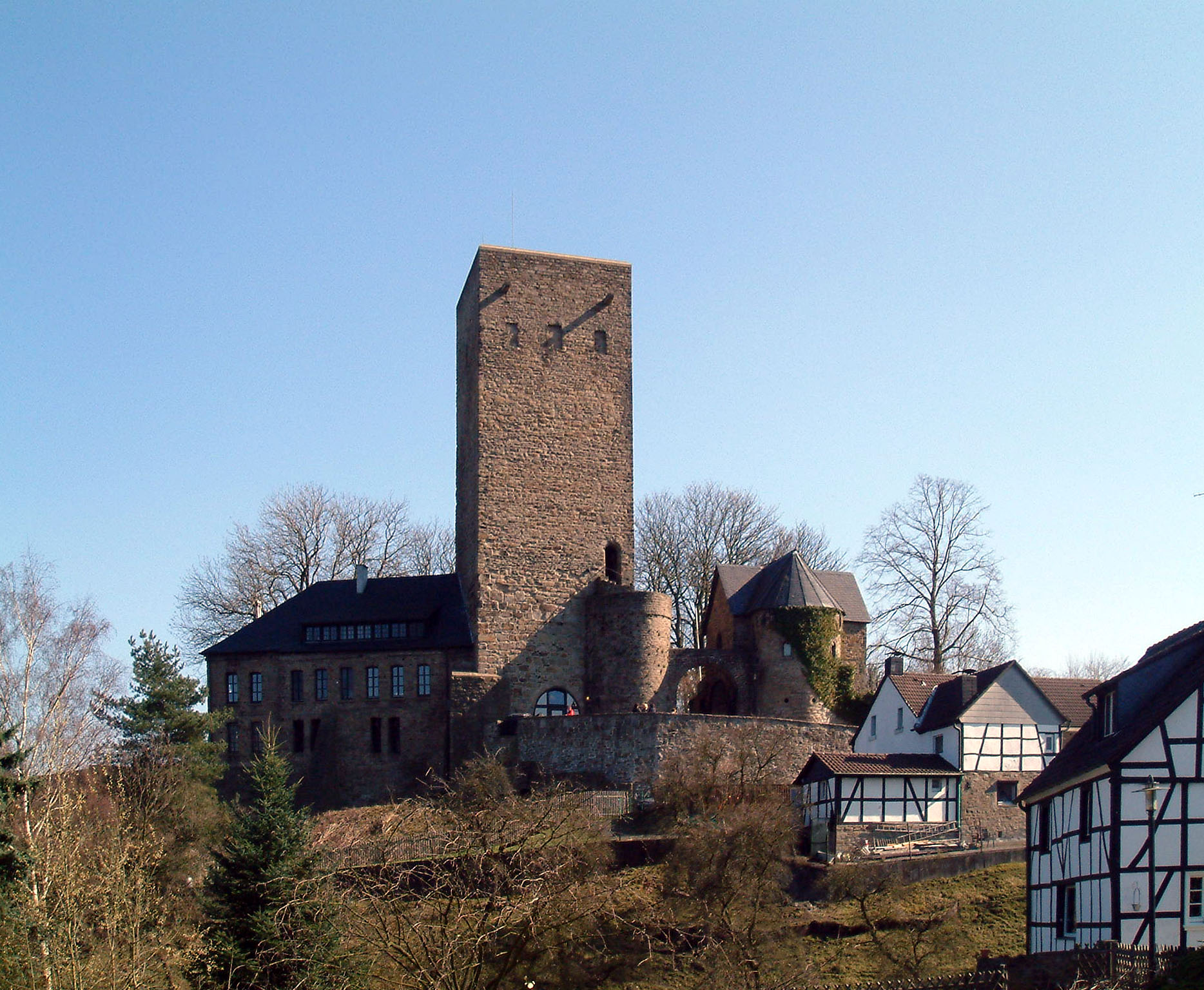Burg Blankenstein on:
[Wikipedia]
[Google]
[Amazon]
 Blankenstein Castle (german: Burg Blankenstein) is a castle located on the south side of the river Ruhr in
Blankenstein Castle (german: Burg Blankenstein) is a castle located on the south side of the river Ruhr in
Hattingen
Hattingen is a town in the northern part of the Ennepe-Ruhr-Kreis district, in North Rhine-Westphalia, Germany.
History
Hattingen is located on the south bank of the River Ruhr in the south of the Ruhr region. The town was first mentioned in 1 ...
, North Rhine-Westphalia
North Rhine-Westphalia (german: Nordrhein-Westfalen, ; li, Noordrien-Wesfale ; nds, Noordrhien-Westfalen; ksh, Noodrhing-Wäßßfaale), commonly shortened to NRW (), is a state (''Land'') in Western Germany. With more than 18 million inha ...
, Germany.Frank Dengler, Burg am 'blanken Stein'"''Ruhr Nachrichten'' (November 23, 2010) p. BOLO3
May 12, 1226 Adolf I, Count of the Mark
Adolf I, Count de la Mark (German: ''Adolf I. Graf von der Mark und Krickenbeck''; c. 1182? – 28 June 1249), until 1226 also known as Adolf I, Count of Altena-Mark. He was son of Frederick I, Count of Berg-Altena and Alveradis of Krickenbeck, da ...
, gave the order to build the castle. He charged Truchsess Ludolf von Bönen with its construction, beginning in 1227. The castle was ready in 1243, but further developed over the course of 200 years by the Counts of the Mark
The County of Mark (german: Grafschaft Mark, links=no, french: Comté de La Marck, links=no colloquially known as ) was a county and state of the Holy Roman Empire in the Lower Rhenish–Westphalian Circle. It lay on both sides of the Ruhr River ...
. By 1425, Blankenstein was one of the most important castles in the county. In 1614, shortly before the Thirty Years' War
The Thirty Years' War was one of the longest and most destructive conflicts in European history, lasting from 1618 to 1648. Fought primarily in Central Europe, an estimated 4.5 to 8 million soldiers and civilians died as a result of battle ...
, it was occupied by Spanish troops. From 1637, the castle fell into disrepair so that, in September 1662, Frederick William, Elector of Brandenburg
Frederick William (german: Friedrich Wilhelm; 16 February 1620 – 29 April 1688) was Elector of Brandenburg and Duke of Prussia, thus ruler of Brandenburg-Prussia, from 1640 until his death in 1688. A member of the House of Hohenzollern, he is ...
ordered its demolition. Only the tower and parts of the curtain wall remained.
In 1860, the owner of the ruin, the employer, Gustav vom Stein, began to rebuild the castle and established a factory there. The property has belonged to the city of Bochum since 1922, but the town is looking for an alternative due to the costs. From 1957 to 1959, most of the buildings of the 19th century were pulled down, but some still remain.
The tower can still be visited and offers a good view over Bochum and the Kemnader Lake.
References
Literature
* Niederhöfer, Kai (2010): ''Burgen AufRuhr. Unterwegs zu 100 Burgen, Schlössern und Herrensitzen in der Ruhrregion''. Edited by Ministerium für Bauen und Verkehr des Landes Nordrhein-Westfalen and Landschaftsverband Westfalen-Lippe. Essen: Klartext Verlag, pp. 120–123 Castles in North Rhine-Westphalia Buildings and structures in Ennepe-Ruhr-Kreis Bochum County of Mark {{NorthRhineWestphalia-struct-stub